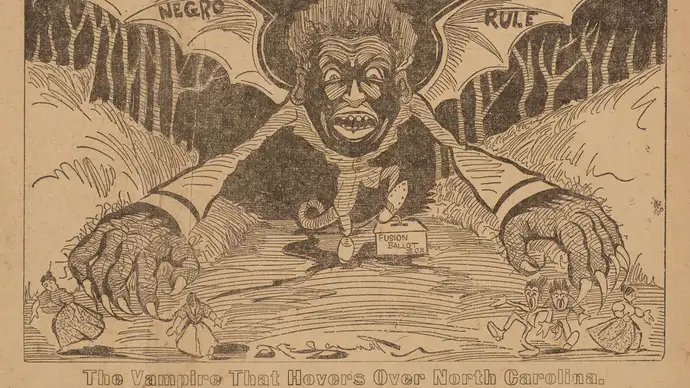Many experts view the 1898 Wilmington Insurrection and Coup D’Etat as a turning point in the fortunes of African Americans in North Carolina and across the nation. The 1898 white supremacy campaign that led to the Wilmington Massacre was an all out assault on Wilmington’s Black middle class and provided a blue print for the white supremacy campaign the following year that effectively barred African Americans in the state from voting at the polls and participating in politics until the 1965 Voting Rights Act. The strategies employed by the white supremacy campaigns in North Carolina were replicated in states across the South and used to disenfranchise African Americans across the country. The more political power White Democrats gained, the larger the leverage they held in political engagement with White Republicans - and the more inclined White Republicans were to disregard the majority of their African American supporters when it became politically and economically advantageous to do so, which was quite often.
While the 1898 Wilmington Insurrection and Coup D’Etat was the beginning of the decline of Wilmington’s Black Middle Class, this was also around the time Durham’s Black Wall Street began to emerge as an economic engine of Blacks in the Bull City. 1898 was the same year what would become the Durham-based North Carolina Mutual Life Insurance Company was founded, which would eventually grow into the largest Black-owned insurance company in the world and one of the largest Black businesses in the United States at its height. The leaders that helped steer Black Durham’s growth did so with the cautionary tale of Wilmington serving as a reminder of the fleeting nature of good fortune.
After decades of prosperity and growth, the root of the demise of Durham’s Black Wall Street mirrored that of scores of thriving Black communities that also emerged in the late 19th and early 20th century and declined in the middle to latter part of the 20th century: Urban Renewal. The racially discriminatory practices that formed the infrastructure of the federal government’s Urban Renewal program that carried on into the 1970’s was paraded throughout the country under the guise of urban revitalization. However, in the case of Black Durham and dozens of other Black communities nationwide, promises of new and improved housing, transportation and business opportunities never came. Instead property was demolished and/or seized by governments, residents and businesses, were displaced, wealth was lost, education suffered and highways were built straight through African American neighborhoods - like Durham’s Haiti community - a final nail in the coffin to whatever prospect of prosperity remained. Over the next several decades Durham’s Black community continued to suffer economic decline, never to regain the level of prosperity it once knew. Today, many Blacks in Durham face poorer outcomes than their forefathers and mothers did a century prior.
Similarly, following the 1898 Wilmington massacre, the African American population in the once majority Black city continued to decline as social, political and economic opportunities for Blacks in Wilmington dried up while the state of North Carolina became an increasingly racially hostile place to live. The loss of wealth stemming from the Wilmington Massacre coupled with the loss of opportunities that followed continue to manifest in poor socio-economic outcomes for Blacks in Wilmington in the present day.
“... it's not enough for schools to say like, oh, we're going to teach 1898 race massacre, and we're going to teach it for one day. And we're going to talk about some of the things and not pay attention to the language that's being used. Right. Not calling it a race riot, and you call it a race massacre, understanding that you need to call things out explicitly. ~Lettie Gore
Guests in this episode

Lettie Gore
Musical Attribution:
1. Title: African Moon by John Bartmann. License, disclaimer and copyright information: CC0 1.0 Universal (CC0 1.0) Public Domain Dedication https://creativecommons.org/publicdomain/zero/1.0/
Link to Music: https://freemusicarchive.org/music/John_Bartmann/Public_Domain_Soundtrack_Music_Album_One/african-moon
2. Title: Window Sparrows by Axletree. Licensed under a Attribution License. License, disclaimer and copyright information: Attribution 4.0 International (CC BY 4.0)
Link to music: https://freemusicarchive.org/music/Axletree/Ornamental_EP/Window_Sparrows
3. Several musical selections are also provided by the American Folklife Center of the Library of Congress.


Comments